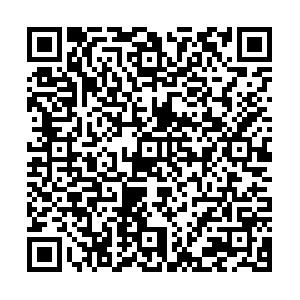Effect of UE Video Laryngoscope and Fiberoptic Bronchoscope for Awake Orotracheal Intubation
-
摘要:
目的 观察用于经口清醒气管插管的UE视频喉镜与纤维支气管镜两种气管插管引导设备的临床效果。 方法 需经口清醒插管困难气道患者60例,随机分为2组,Ⅰ组采用UE视频喉镜和Ⅱ组采用纤维支气管镜。记录基础值(T0)、气管内喉麻管喷洒局麻药或经纤支镜喷洒局麻药(T1)、气管导管进入气管(T2)、插管完成3 min(T3)时的生命体征变化,插管时间、插管反应及患者满意度。 结果 Ⅰ组患者心率、血压在T2较T0有增高(P < O.05),Ⅱ组心率、血压在T2较T0有显著增高(P < O.01),2组间在T0,T1、T2、T3,差异无统计学意义(P > O.05),插管时间Ⅰ组、Ⅱ组有明显差异(P < O.05),患者反应、患者评价Ⅰ组、Ⅱ组无明显差异(P > O.05)。 结论 UE视频喉镜用于经口清醒气管插管,血流动力学稳定、安全舒适、操作便利可以推广使用。 Abstract:Objective To observe the effect on two kinds of tracheal intubation guiding equipment (video laryngoscope andfiberoptic bronchoscope)for awake orotracheal intubation. Methods Sixty patients with difficult airway requiring conscious intubation were randomly divided into two groups, respectively with UE video laryngoscope(groupⅠ) and fiberopticbronchoscope (FOB) (groupⅡ). Heart rate (HR), mean arterial pressure (MAP), the change of hemodynamic at four time points were recorded: 5 min after enteringthe room (T0), sprayed local anesthetic on the endotracheal tube or sprayed local anesthetic via FOB (T1), the endotracheal tube entered the trachea (T2), the patient’ s reactionto the completion of three minutes of intubation (T3). Results Compared with T0, the HR and MAP in groupⅠat T2 were both higher (P < 0.05), Compared with T0, the HR and MAP in groupⅡat T2 were both significantly higher (P < 0.01), there were no significant differences between the two groups at T0, T1, T2, and T3 (P > 0.05), There were significant differences between the two groups intubation time (P < 0.05), Similarly there were no significant differences between the two groups in patient’ s reaction and satisfaction (P > 0.05). Conclusion UE video laryngoscope can be widely used in the case of awake orotracheal intubation with stable hemodynamics, safe and comfortable, and convenient operation. -
Key words:
- Video laryngoscope /
- Fiberoptic bronchoscope /
- Awake tracheal intubation
-
表 1 2组基线资料比较(
$ \bar x \pm s $ )Table 1. Comparison of baseline data between two groups (
$\bar x \pm s $ )组别 ASA
(Ⅰ级/Ⅱ级)性别
(男/女)年龄
(岁)BMI
(kg/m2)Ⅰ组 8/22 19/11 42.51 ± 9.32 21.38 ± 3.41 Ⅱ组 9/21 20/10 41.49 ± 10.73 22.25 ± 3.33 表 2 2组患者不同时点HR、MAP、SPO2的变化(
$ \bar x \pm s $ )Table 2. The variety of HR,MAP,SPO2 at different time point in two groups (
$ \bar x \pm s $ )指标 组别 n T0 T1 T2 T3 HR(次/min) Ⅰ组 15 71.7 ± 7.8 73.1 ± 7.5 74.2 ± 6.5* 71.6 ± 6.9 Ⅱ组 15 71.8 ± 8.3 73.1 ± 7.1 76.1 ± 6.0** 71.1 ± 7.1 MAP(mmHg) Ⅰ组 15 83.1 ± 5.8 83.9 ± 5.7 85.5 ± 5.7* 83.1 ± 6.2 Ⅱ组 15 82.5 ± 5.9 83.1 ± 5.4 86.2 ± 5.6** 82.9 ± 6.2 SPO2(%) Ⅰ组 15 99.8 ± 0.4 99.5 ± 0.7 99.6 ± 0.6 99.8 ± 0.4 Ⅱ组 15 99.6 ± 0.6 99.4 ± 0.7 99.5 ± 0.6 99.7 ± 0.5 与T0时间点比较,*P < 0.05,**P < 0.01。 表 3 插管时间(min)
Table 3. Intubation time (min)
组别 n 插管时间 Ⅰ组 30 9.3 ± 1.5 Ⅱ组 30 10.4 ± 1.7* 与Ⅰ组比较,*P < 0.05。 表 4 患者反应(n)
Table 4. The comparison of stimulative reaction between two groups (n)
组别 n 呛咳 恶心 体动 Ⅰ组 30 5 1 0 Ⅱ组 30 4 2 0 表 5 患者评价(n)
Table 5. The comparison of satisfaction between two groups (n)
组别 满意 基本满意 不满意 Ⅰ组 22 8 0 Ⅱ组 21 9 0 -
[1] 中华医学会麻醉学分会. 困难气道管理指南[J]. 临床麻醉学杂志,2013,29(1):93-98. [2] 李芳,王烨,邓晓明. 视频喉镜的临床进展[J]. 医学综述,2017,23(3):544-548. doi: 10.3969/j.issn.1006-2084.2017.03.029 [3] 李慧娴,薛富善,刘亚洋. 气道管理中应用视频喉镜的优势和技术要点[J]. 国际麻醉学与复苏杂志,2017,38(9):769-772. doi: 10.3760/cma.j.issn.1673-4378.2017.09.001 [4] 薛富善. 改善危重症患者气管插管安全的策略[J]. 中华实用诊断与治疗杂志,2018,32(2):105-108. [5] 谢雨晨,陈文栋,马莉. 困难气道患者三维有限元模型解剖差异的分析[J]. 中国组织工程研究,2019,23(4):562-566. [6] Scott J A,Heard S O,Zayaruzny M,et al. Airway Management in Critical Illness:An Update[J]. Chest,2020,158(6):2711-2712. [7] Gupta R,Sahni A. Is Video Laryngoscopy Easier Than Direct Laryngoscopy for Intubation in Patients With Contracture Neck?[J]. Saudi J Anaesth,2020,14(2):206-211. [8] American Society of Anesthesiologists Task Force on Management of the Difficult Airway. Practice guidelines for management of the difficult airway. an updated report by the American Society of Anesthesiologists Task Force on Management of the Difficult Airway[J]. Anesthesiology,2003,98(5):1269-1277. doi: 10.1097/00000542-200305000-00032 [9] Ovassapian A. ToPical anesthesia of the airway [M]//Ovassapian A. Fiberoptic endosoopy and the difficult airway. 2nd ed. New York: Lippincott-Raven Press, Ltd, 1996: 47-59. [10] 薛富善,王强,程怡. 视频喉镜在气道管理中应用的进展[J]. 国际麻醉学与复苏杂志,2012,33(12):795-797,818. doi: 10.3760/cma.j.issn.1673-4378.2012.12.001 [11] Ciccozzi A,Angeletti C,Guetti C,et al. GlideScope and frova introducer for difficult airway management[J]. Case Rep Anesthesiol,2013,2013:717928. [12] Russell T,Khan S,Elman J,et al. Measurement of forces applied during Macintosh direct laryngoscopy compared with GlideScope videolaryngoscopy[J]. Anaesthesia,2012,67(6):626-631. [13] Amini S,Shakib M. Hemodynamic changes following endotracheal intubation in patients undergoing cesarean section with general anesthesia:application of glidescope videolaryngoscope versus direct laryngoscope[J]. Anesth Pain Med,2015,3(30):218-236. [14] 方明,丁娴,李倩. 视频气道表面麻醉喷雾装置在清醒困难气管插管中的应用[J]. 江苏医药,2014,40(12):1444-1446. -







 下载:
下载: 


